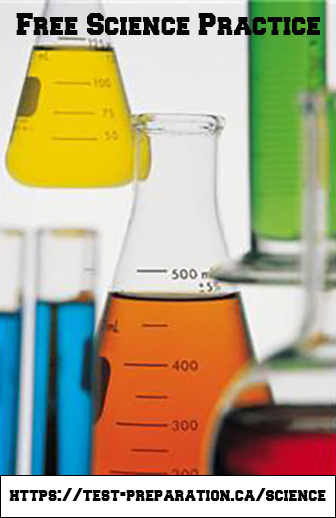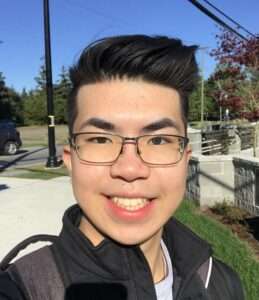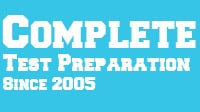
How to Study Science – The Complete Guide
- Posted by Brian Stocker MA
- Date March 6, 2019
- Comments 2 comments
Scientific method is the heart and foundation of studying science
You may find some of the techniques and methods outlined here to be intimidating, and you may want to avoid them completely. Try them out and see which techniques suit your learning and studying style. All of them are designed to make it easy for you to make deep impressions of what you are reading, and then make useful associations that will help you remember the information when needed. All of them work but they don’t all work for everyone. Any new technique is difficult at first and will improve with practice.

When science is difficult
Remind yourself that the difficulty in science is based on the nature of the subject.
Purpose: This will help you avoid giving up because you feel like a failure, or like it’s your fault. Science courses contain new and difficult concepts and material, plus a great deal of problem-solving. This requires a different approach to studying.
Understand the principles and facts before memorizing them
Purpose: Understanding the material will make it easier to memorize. As you study the material, you are unconsciously building your memory of the material.
Associate new information with old information
Purpose: Associations are important for memory. Associating new information to what you know is more effective than associating new information to other new material. NEW -> OLD is better than NEW -> NEW
Make a habit of regularly asking “why or how does this new information make sense?” This helps to associate new material with what is already known.
Make Associations

Think about visual connections like a spider’s web. Spiders don’t create their webs by rushing through it, just like how you can’t always rush through your study time or cram for a test the night before. Spiders start with a single thread and as they weave more, they slowly add more connections, improving the overall strength of their web.
Hopefully, this is what will happen by adding visual pathways to your studies. Adding these cues is like adding additional threads to your web of knowledge. As you add more you can improve your overall knowledge of your study material. Visual connections will help you to imagine an idea in multiple ways whether that be through written notes, your own comments or imagery that you’ve added.
Imagine this: You’re studying chemical bonds between atoms and molecules. You’re asked a question on the difference between substitutional and interstitial alloys in metallic bonding but you don’t know how to explain it. If the only way you learned the difference between the two was memorizing the definition in your notes but you can’t remember it in the moment, that's it; You can’t answer the question. But if you were to use different kinds of visual connections, you might be able to answer the question even if you forget the exact definition. For example, when thinking about the answer, you remember the picture that you drew in your notes: a drawing of a series of circles of similar size to represent substitutional alloys and a collection of circles with smaller dots scattered in between the circles to represent interstitial alloys. It doesn’t even have to be a drawing. You could have remembered that substitutional alloys looked like a game of connect four while interstitial alloys look more like Battleship with game pieces of different sizes. By using that imagery or visualization, you could infer that substitutional alloys are atoms of similar size beside each other while interstitial alloys have smaller atoms in between metal atoms. Visualization like this can help you understand and explain concepts without needing to strictly memorize an exact difference.
First reading
Purpose of your first reading should be to understand what you read
Avoid using SQ3R or any other study systems the first time you read. Do not also try to memorize what you are reading.
Reason: When you read a science book you would be confronted with a big mass of complex and new material. Your mind has a big task trying to comprehend new ideas and concepts and breaking them down to simpler, easier to understand concepts. The survey in the first step helps with this. On the first reading, spend time to studying much more carefully, and attend classes that discussed it, and review your notes from those classes. Your mind will understand the material better, and the bigger relationships between the different sections of the material. Using SQ3R the very first time you read would make comprehension difficult. It would overload your working memory with large bits of information making you lose both your ability to understand and memorize the information.
Monitor your level of comprehension
Take note of meanings to check if you actually understand them or not. If you find a bit of information hard to understand, make use of study techniques to help you better comprehend.
Pause after natural units
Read, pause, then read and pause between paragraphs and short passages.
Purpose: Pausing while you read helps your mind organize and process the different parts of information so that you understand the entire unit. This assembling or organizing of meanings takes place automatically.
If come across cause and effects statements, descriptions or definitions you can use a simple style of marking. You can write D in the margin to denote a definition, F to indicate a descriptive face, and other simple alphabetical codes of your choice.
Mark any passage that seems difficult or you don’t understand, so you can come back.
Purpose: To help you locate it later so as to reread it for better comprehension. The mark also prevents you from forgetting areas you were not clear on.
If you are having problems with a technical term, you can write it down along with its meaning and keep it close. You can also make a list of technical terms with their meanings and go over it regularly.
Review if necessary
If you read a chapter after taking a break from it, and then find it hard to understand because you no longer remember some of the things earlier read, you need to do a review. Reviewing what have been read before would make you remember key principles and concepts that will help you understand the rest of the chapter.
Associate what you are reading with mental images of the concrete events and things. Form visual images, imagined feelings of the movement and texture of events and objects. If the science material is abstract, form mental images of one or two specific things.
Read aloud in a normal conversational tone to yourself. If your location or situation does not allow you to read aloud, you can imagine yourself reading aloud and the sound of your voice. Translating printed or written text into words helps activate meanings.
Look repeatedly at text and related graphics to form a link between the text and the graphics related to it. When you look at the words and the graphics try to find out what each is trying to say and then see how they both are saying the same things. When text or words are related to graphics, it makes them easier to understand and recall. Types of graphics would include diagrams, charts, graphs, pictures, and tables.
When you come across an analogy, you need to link the analogy to relevant technical descriptions, explanation and concepts. Analogies are very useful. Learn how to translate analogies, part by part to the related parallel parts of the material.
Use self-explanations to express the meaning of the material. Taking it section by section, translate meanings of what you read, form associations and then relate them to other parts of the material. Get interferences and try to match your mental model of the material match with the writer’s.
Indicate paragraphs or passages not fully understood using a question mark. Remember to return to these sections when your mind is rested.
Classify lectures and texts using science goals
The goals of science are to discover natural occurring phenomena, to explain, describe, predict and use natural phenomena. Science goals also seeks to support claims with evidence and sound reasoning.
When studying science you will see statements that describe, cause-and-effect statements to predict, explain or inform natural phenomena. You will also see definitions, concepts and arguments to support scientific claims, or prove that predictions, explanations and descriptions are valid.
As you study, try to classify the information into, cause and effect statements, descriptions, and reasoning or concept definitions.
Purpose: Helps identify what is important. Also helps organize the information into science patterns. Makes it easier to form associations to the information that would otherwise be difficult to form associations with.
This is a similar process to Taking Notes
Link graphics and text together
Graphics and texts under the same topic should be translated into each other so that you can form a link between them. This means that when you see the text, you should be able to visualize the diagram, chart, picture or graph that displays the text.
Purpose: Helps to form associations in the mind that can link visual and verbal memories.
How to handle material that is not-too meaningful and without any self-association
An effective method is to try memorizing the material with common memorization methods. Psychologists listed the following as things that are relatively more difficult to learn: technical terms, proper names, formulas, dates, foreign words, formulas, arbitrary facts, and numbers. Information presented as a list may also be difficult to memorize. You can use memory techniques like frequent review, self-tests, and mnemonics.
Purpose: Building memory for material that may be hard-to-memorize. More on how to memorize
Learning skills—reasoning scientifically and solving problems
To build skills, avoid studying only the principles and knowledge while avoiding the problem solving questions. Go through already worked out problems, then practice and keep practicing for several days.
Purpose: To adapt study methods to different material and skills.
Use common good study methods faithfully in science More on how to study
Purpose: helps ensure that you form accurate and effective learning skills within a relatively short time.
Survey the material before reading
Surveying your reading material or chapter of a textbook before reading, increases capacity to understand and retain new information. When you first survey new material, the patterns and information form a structure for associations, which builds memory. The more time you spend with the material the better acquainted with you become and the more it sticks to your memory.
A quick survey should be your first contact with the material. Diving straight into dense material gives the mind fewer opportunities to make associations, and the text is confusing. More on how to study from textbooks
How to study from textbooks – a quick survey
How to survey
Spend about ten minutes figuring out what the chapter or textbook section contains. Skim through the introduction, vocabulary list, headings, main graphics, boldfaced material, any type of emphasized material, summary and even some of the self-test problems,
What to look for when doing a survey
Try to identify the information in the chapter that highlights the science goals such as the natural occurring phenomena discussed, cause and effects statements, descriptive statements, as well as the concepts and definitions. Also check if you can find scientific arguments that link theories to evidence, and if the chapter teachers specific problem solving skills.
What should you understand from a survey?
Survey involves skimming through the material to form an idea on what it is about. Do not expect to fully comprehend the headings, vocabulary lists or summary of the chapter. Try to get a general overview of the information, even if you don’t understand it fully. That is expected so do not worry. The aim is just to get a general idea and notice patterns to make the actual reading, in the next step, more productive.
If you study a section or chapter in more than one study session, you may have forgotten some of the information. Do a review of what you have read and survey again.
Purpose: To recall the main information and topics, which makes it easier to associate new information. Ensures that you do not read without forming associations.
Second Reading
The purpose of a second reading of the science material to identify statements that tally with science goals.
Purpose: To conduct a deep assessment or the material with the aim of understanding the material and to form associations that will build memory. As you read through the material, keep asking yourself the point being discussed in the sentence, phrases and paragraphs.
Read deep
Purpose: Read for a deeper understanding to build associations and improve memory. The second reading will be slow and hard work.
Take note of descriptions, definitions and cause and effect statements. More on How to Study from your Textbook
Mark cause and effect statements, descriptions and definitions and any other important concepts.
Next, identify the related parts of concepts and definitions
The definition of a concept includes the concept itself, the visual image, erbal definition, ways to measure the concept, and methods the concepts can be put to use to solve problems. (Measurement is vital because it is used by scientists to make explanations and descriptions precise and useful in gathering evidence.
Purpose: To bring all related parts of a concept together. Also helps prepare you to tackle test questions that link together examples, definitions and related procedures.
If you find several parts of a concept spread over the chapter, in several pages, note page numbers of related references close to the original concept definition.
Third, identify linked theories and evidence
Science textbooks often present a theory and then provide some evidence and research studies that bear both positively and negatively on the theory. Identify and mark the theory with the linked evidence. For example, a theory may be presented in page 55, while the evidence and studies are presented in pages 56, 57, 60 and 61. Here, indicate in the margin by the theory on page 55 “see pp. 56, 57, 60, 61.” This will help later when doing your review. You would also be better prepared to answer test questions that request that involve both the theory and evidence.
Final study session
Focus on building memory for specific large blocks of information. At this stage focus on building memory for large chucks of information, especially information that is hard to understand. You need to make strong associations and impressions, to really ‘own’ the material and and this will involve more time with the material.
Date Published: Wednesday, March 6th, 2019
Date Modified: Wednesday, June 14th, 2023
Previous post
Video Series on Test Preparation, Multiple Choice Strategies and How to Study
You may also like
Memory Palace Technique with Examples
The Memory Palace Technique creates stories with familiar places and objects which are associated with certain information. Let me explain the process, let’s us an example to help simplify. We are going to memorize the number five hundred twenty two. …
How not to Get Distracted while Studying
Just eliminate all distractions! Well, unfortunately it’s not that easy for me. I will fiddle with my pen, doodle in the textbook, get lost in thought looking out the window, or make up a song while tapping on my desk. …
Super foods for studying
Imagine taking a test and then hearing a loud “CRUNCH,” just to see the student in front of you biting into raw broccoli Or you look over and see someone eating walnuts while marking off their exam. You wonder, “What …

2 Comments
What are the major differences and characteristics of technical/scientific exams and non-technical/non-scientific exams. Ex: a technical certification exam and a grammar exam, a scientific exam and a spelling exam?
I’m researching to write a book on how to study for technical exams. I am also planning to write about how to study for scientific exams and ace them. I haven’t been able to get the answers I’m looking for as of yet. I have some ideas about the characteristics of technology and science, but need more info. Thanks.
Look thru quickly first – then really go at it